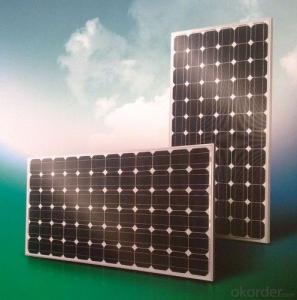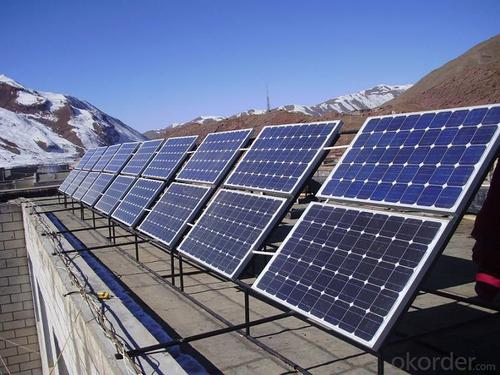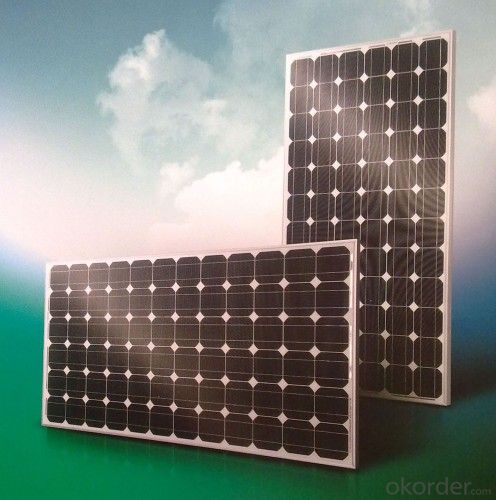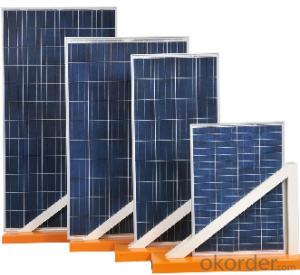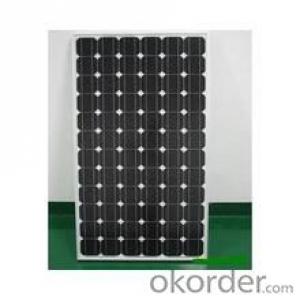220W Monocrystalline Silicon Solar Panels for Mobile Homes
- Loading Port:
- China main port
- Payment Terms:
- TT OR LC
- Min Order Qty:
- 100000 watt
- Supply Capability:
- 10000000 watt/month
OKorder Service Pledge
OKorder Financial Service
You Might Also Like
Quality Certificates
IEC61215, IEC61730, IEC62716, IEC61701, UL1703, ETL, JET, CE, MCS,
CEC, Israel Electric, Kemco
ISO9001:2008: Quality management system
ISO14001:2004: Environmental management system
OHSAS18001:2007: Occupational health and safety management system
Amerisolar’s photovoltaic modules are designed for large electrical power requirements. With a 30-year warranty, AS-6P offers high-powered, reliable
performance for both on-grid and off-grid solar projects.
Key features:
Low degradation and excellent performance under high temperature and low
light conditions.
Robust aluminum frame ensures the modules to withstand wind loads up to
2400Pa and snow loads up to 5400Pa.
Positive power tolerance of 0 ~ +3 %.
High ammonia and salt mist resistance.
Mono 220w with high module conversion efficiency and high quality. Meanwhile all panels have positive power tolerance of 0 ~ +3 %.

As a solar brandoriginated from America (USA) with production bases in USA, China, Taiwan andVietnam, Amerisolar is taking more competitive strategies based on its Leading Technology, High Quality, No Anti-dumping Tariff prices and worldwide Door-to-Doorlogistics services.
Process is as follows:
1, the battery test
2, positive Welding - Inspection –
3, on the back of cascading - Inspection –
4, laying (glass cleaning, material cutting, glass pre-processing, laying) –
5, laminating –
6, to flash ( to the side, cleaning) –
7, fitted border (glue, loading angle keys, punching, install box, scrub I glue) –
8, the welding junction box –
9, high-pressure test –
10, component testing -- -
11 appearance inspection, packaging and storage;
FAQ:
1. How long will my inquiry get response?
Your inquiry related to our products or prices will be replied within 24 hours.
2. Can I get professional service and suggestion?
Well-trained and experienced staffs to answer all your questions in fluent English.
3. Do you accept OEM or customized design?
OEM & ODM, any your customized lightings we can help you to design and put into product.
4. What if I need specific design?
Distributorship are offered for your unique design and some our current models.
- Q: Can solar panels be installed on assisted living facilities?
- Yes, solar panels can be installed on assisted living facilities. In fact, installing solar panels on these buildings can be highly beneficial as it can help reduce energy costs, promote sustainability, and contribute to a greener environment. Additionally, solar panels can provide a reliable source of renewable energy, helping to ensure a more reliable power supply for the facility and its residents.
- Q: I don't know anything about where to buy solar panels. I just want to save on the electric bills.
- Solar panels could supply an air conditioning unit but it would be SUPER expensive to do. Air conditioners are power hogs.
- Q: How do solar panel power systems work?
- The panels soak up the energy from the sun and then convert the energy into power, electricity, etc. They can also store a lot of energy so that we still have power on cloudy days. Does that help? Without more info, its hard to get more specific.
- Q: What would these solar panels power? For instance, my energy bill shows 2035kWh for last month. How much would this remove from that if it outputted full power? Thanks!
- A solar panel that is rated at 60 watts would produce that amount under the most favorable conditions of direct sunlight at noon in a good location. This would taper off to nothing at the beginning and ends of the daylight. A 60 watt Panel operating at full output for hour would produce 60 watt hours. If we assumed a straight line of output from zero to 60 watts and back to 0 again over 6 hours the average output would be 30 watts x 6 hours = 80 watt hours / day x 365 days = 65700 watt hours in a year / 2 = 5475 watt hours in a month. You lose about 0% converting from DC to AC. This reduces this to about 4927.5 watt hours. Your bill is measured in KW hr which are 000 times bigger. This is 4.9275 KW hr or .24% of your last month's bill. At a national average of about $.2 per KW hr the energy out put for one month would be equal to about 60 cents.
- Q: I need help?!!
- benefit- It makes use of the Suns organic engery to produce potential for a house/employer which saves money as against employing potential from the community materials for electricity. it will keep away from lots of money in case you reside in an area that is sunny a super style of the year. disadvantage- You extra suitable wish that is sunny for a on an identical time as to construct a inventory pile of potential. It somewhat relies upon on your desires for potential, in case you do no longer use incredibly some it and stay in a sunny section a super style of the year, then you incredibly could desire to have a super style of potential that only kinda sits there. yet once you reside in an area it somewhat is frequently cloudy all year around then image voltaic panels does no longer be superb for you.
- Q: There are so many solar panels and kits it is very confusing. I need to know what exactly I would need if I had an underground home with no electricity. I want to be totally off the grid with solar power. Someone please explain to me in simple terms what exactly I need. Maybe give me a link to the right kit for me. Also are they easy to install? Are there instructions that I need to download?Thank you
- Homemade okorder /
- Q: Tell me complete installation I have one 50Ah battery two 80 watts solar panels about 30 meter DC wire i charge ontroller and 000watt inverter. How i hook two solar panels to charge controller to battery then inverter?
- Wires from panels go to controller input terminals. Controller DC battery terminals to battery so that the controller will protect batteries and split power as required by demand to the inverter. Output DC on controller to inverter. Output AC or outlets on the inverter to AC appliances. One thousand watts is not very much capacity. It will keep your computer running and a lamp to read by. It won't run major appliances. A hair dryer is typically 500 watts and could not be run by this system.
- Q: thinking of getting a portable solar panel laptop charger...may be a stupid question but may be a very intelligent one as well ;)
- Depends on the efficiency of your solar panel, but it is highly unlikely that the light in an airplane is enough to do much. I'm not discouraging the solar panel altogether. It just isn't an indoors especially if it is dim on the plane. Most that I've been on turn off the lights and then leave it to the individual to turn on the single over head reading light.
- Q: Can solar panels be installed on a university or college campus?
- Yes, solar panels can be installed on a university or college campus. In fact, many educational institutions have already embraced solar energy as a way to reduce their carbon footprint and promote sustainability. Installing solar panels on campus buildings can provide clean, renewable energy, reduce electricity costs, and serve as an educational tool for students to learn about renewable energy technologies.
- Q: can i put a solar panel on a projector. if nt wat is a low energy projector that i can watch movies and play games on
- Unlikely to prove useful. Solar panels don't generate very much current. You would probably wind up spending several thousand dollars, and wind up with a solar panel array (including batteries and power inverter) that is certainly not portable. You will also need adequate current for your projection source (ie DVD player or computer), as well as sound. By and large, the cheapest projectors require the least amount of power. There is no way around the fact that, for a projector to be practical, it must output out a great deal of light. Adequate light requires adequate current.
Send your message to us
220W Monocrystalline Silicon Solar Panels for Mobile Homes
- Loading Port:
- China main port
- Payment Terms:
- TT OR LC
- Min Order Qty:
- 100000 watt
- Supply Capability:
- 10000000 watt/month
OKorder Service Pledge
OKorder Financial Service
Similar products
Hot products
Hot Searches
Related keywords


